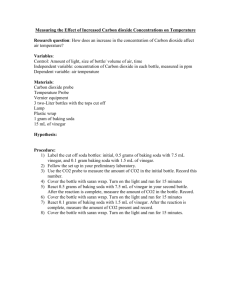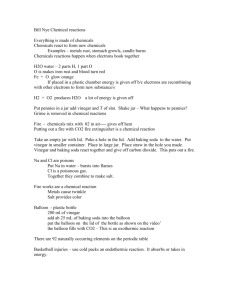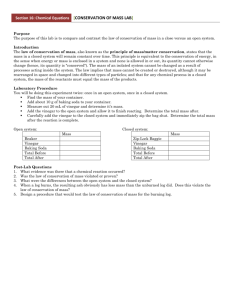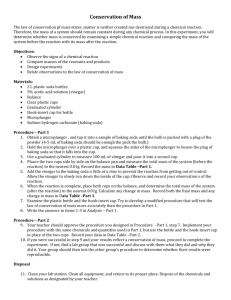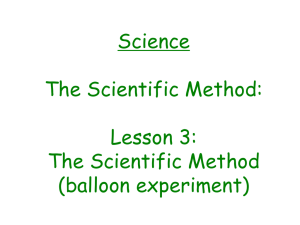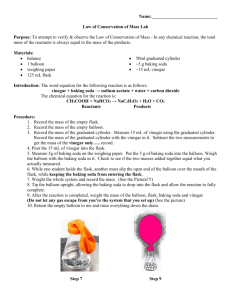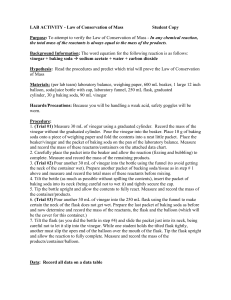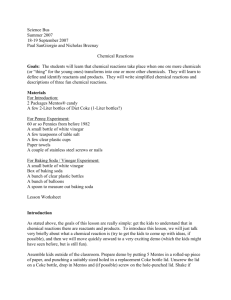Law of Conservation of Mass Lab: Vinegar & Baking Soda
advertisement
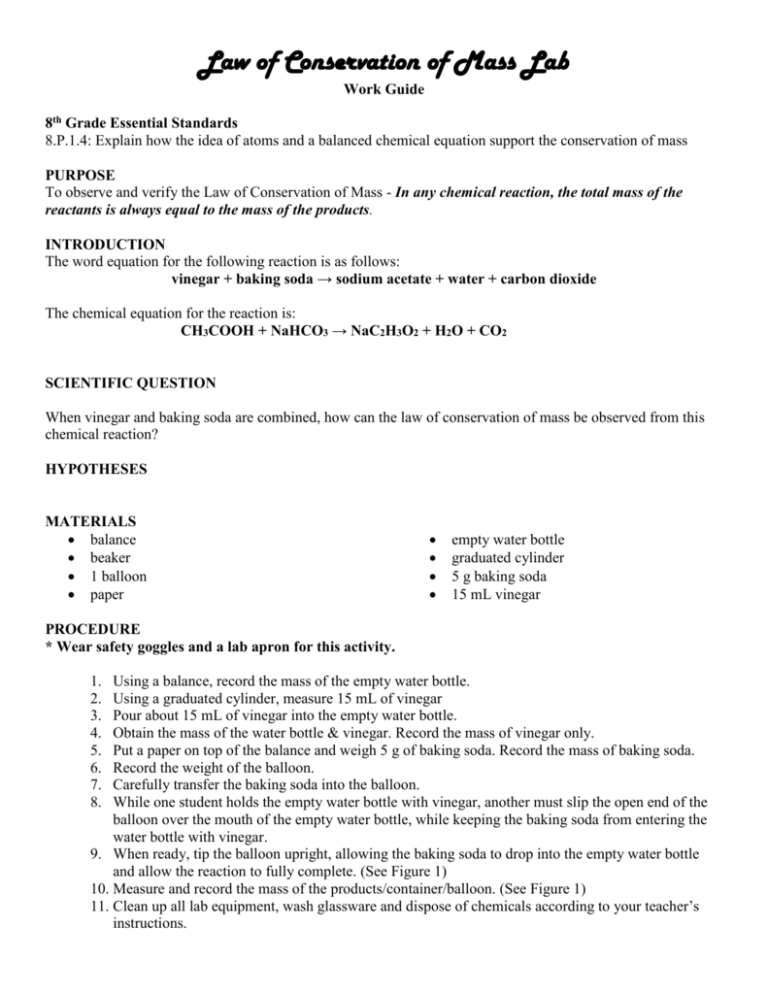
Law of Conservation of Mass Lab Work Guide 8th Grade Essential Standards 8.P.1.4: Explain how the idea of atoms and a balanced chemical equation support the conservation of mass PURPOSE To observe and verify the Law of Conservation of Mass - In any chemical reaction, the total mass of the reactants is always equal to the mass of the products. INTRODUCTION The word equation for the following reaction is as follows: vinegar + baking soda → sodium acetate + water + carbon dioxide The chemical equation for the reaction is: CH3COOH + NaHCO3 → NaC2H3O2 + H2O + CO2 SCIENTIFIC QUESTION When vinegar and baking soda are combined, how can the law of conservation of mass be observed from this chemical reaction? HYPOTHESES MATERIALS balance beaker 1 balloon paper empty water bottle graduated cylinder 5 g baking soda 15 mL vinegar PROCEDURE * Wear safety goggles and a lab apron for this activity. 1. 2. 3. 4. 5. 6. 7. 8. Using a balance, record the mass of the empty water bottle. Using a graduated cylinder, measure 15 mL of vinegar Pour about 15 mL of vinegar into the empty water bottle. Obtain the mass of the water bottle & vinegar. Record the mass of vinegar only. Put a paper on top of the balance and weigh 5 g of baking soda. Record the mass of baking soda. Record the weight of the balloon. Carefully transfer the baking soda into the balloon. While one student holds the empty water bottle with vinegar, another must slip the open end of the balloon over the mouth of the empty water bottle, while keeping the baking soda from entering the water bottle with vinegar. 9. When ready, tip the balloon upright, allowing the baking soda to drop into the empty water bottle and allow the reaction to fully complete. (See Figure 1) 10. Measure and record the mass of the products/container/balloon. (See Figure 1) 11. Clean up all lab equipment, wash glassware and dispose of chemicals according to your teacher’s instructions. 12. Return safety googles and aprons. Figure 1 DATA AND RESULTS: Calculate initial mass of reactants vs. final mass of products. Mass of Vinegar Mass of Baking in grams Soda in grams Total Mass of REACTANTS in grams -Vinegar and Baking Soda only (Before the reaction) Total Mass of PRODUCTS in grams Vinegar and Baking Soda only (After the reaction) ANALYSIS QUESTIONS 1. What evidence was there that a chemical reaction occurred? 2. How did the final mass of the product compare with the initial mass of the reactants? Did it support the law of conservation of mass? Justify your answer. 3. How else could you have tested the law of conservation of mass for this reaction? CONCLUSIONS Based from the data you collected is your hypothesis right or wrong? Explain your answer. RECOMMENDATIONS Discuss possible errors that could have occurred in the collection of the data (experimental errors) REAL WORLD APPLICATION List one thing you learned and describe how it applies to a real-life situation.

